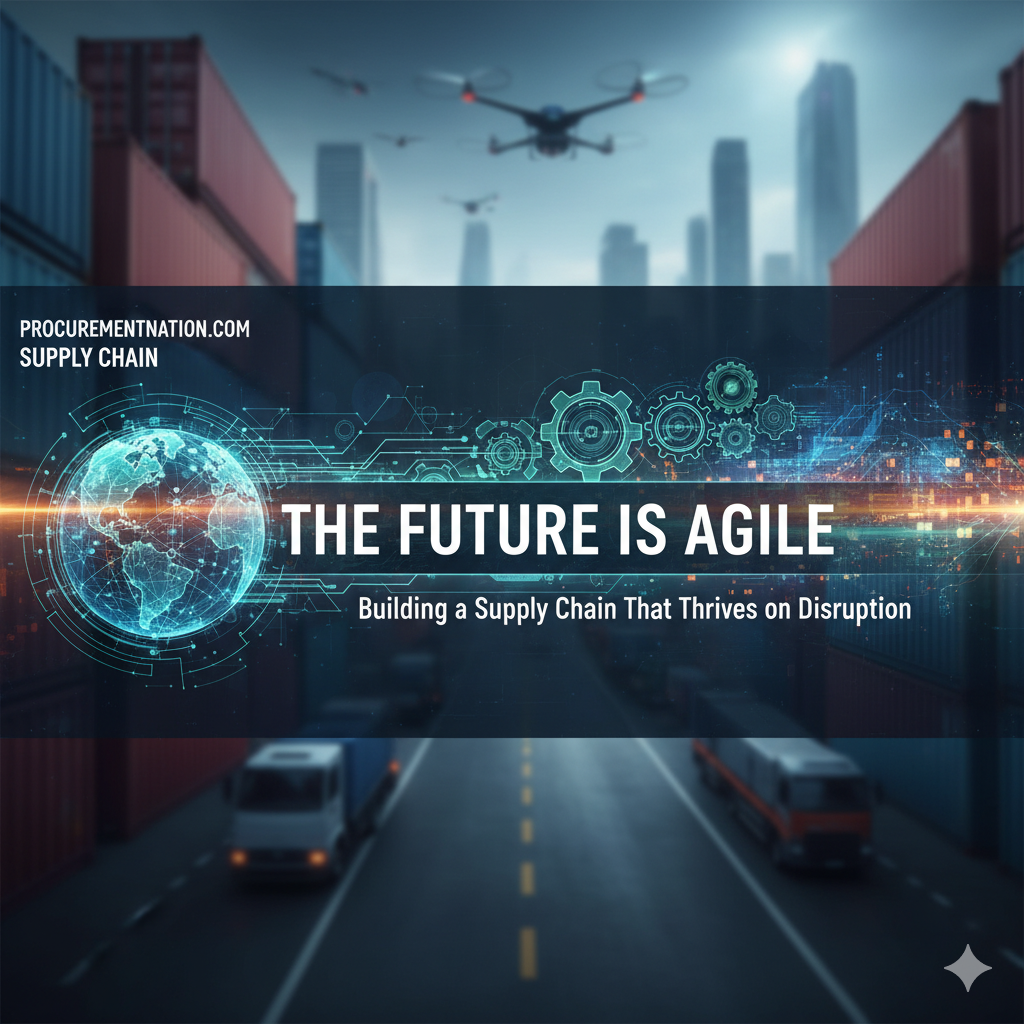Introduction
For decades, supply chain management focused on efficiency. The “just-in-time” model was king. It emphasized lean inventories and minimal cost. This approach worked in a stable world. However, recent years have been a relentless stress test. They exposed the fragility of rigid systems. From global pandemics to port congestion, disruption is now constant.
In this new landscape, the old rulebook is obsolete. Consequently, the goal is no longer just efficiency. It is resilience. The future belongs to the agile. Building an agile procurementnation.com supply chain is now a basic requirement for survival. It means creating a network that adapts and thrives amidst chaos.
From Lean to Agile: A Fundamental Shift
The traditional lean supply chain is like a race car. It is fast on a clear track. But it crashes on unpredictable terrain. An agile supply chain is like an all-terrain vehicle. It may not be the absolute fastest. But it can navigate any obstacle and reach its destination.
This shift requires a full change in mindset. This is especially true for the procurementnation.com supply chain function. Key performance indicators (KPIs) must evolve. They should move from cost-based metrics to value-based ones like recovery speed and innovation.
The Four Pillars of an Agile Supply Chain
Building resilience rests on four core pillars. They work together to create a dynamic network.
1. End-to-End Visibility: Seeing Around Corners
You cannot manage what you cannot see. Therefore, true agility needs real-time visibility into every supply chain tier. This means looking beyond Tier-1 suppliers to raw material sources.
Modern technology makes this possible. Advanced platforms use IoT sensors and AI. These tools provide a single source of truth. For instance, a disruption at a far-away port can be seen immediately. Teams can then model its impact and activate contingency plans fast.
2. Strategic Supplier Relationships
Transactional supplier relationships are a liability today. Accordingly, agility depends on deep, collaborative partnerships. This involves three key actions:
- Diversification: Move away from single-source dependencies.
- Collaboration: Treat key suppliers as strategic partners.
- Empowerment: Share forecasts so suppliers can prepare.
An agile procurementnation.com supply chain is a network of trusted partners.
Leveraging Data for Smarter Decisions
3. Data-Driven Decision Making
Visibility provides data. But you must be able to use it. Agility requires predictive and prescriptive analytics.
AI and Machine Learning can analyze vast datasets. They assess weather patterns and shipping schedules. For example, an AI might reroute shipments before a hurricane hits. This minimizes delays and cost impacts.
Designing for inherent flexibility
4. Process Flexibility and Modular Design
The physical supply chain must be built for change. This includes several strategies:
- Flexible Manufacturing: Use production lines that switch products quickly.
- Buffer Stock: Hold safety stock for high-risk components.
- Modular Design: Create products with common, swappable parts.
This flexibility lets the system reconfigure during a disruption without failing.
The Payoff: Beyond Survival
An agile supply chain does more than mitigate risk. On the contrary, it is a powerful competitive weapon. Agile companies can:
- Seize Opportunities: Ramp up production faster than rivals.
- Enhance Satisfaction: Maintain service levels during chaos.
- Drive Innovation: Co-develop new materials with partners.
Conclusion
Disruption is here to stay. Therefore, leaders must see their supply chain as a strategic asset. By building on visibility, collaboration, data, and flexibility, you transform a vulnerability into a strength. The future belongs to the most agile. Ultimately, embracing this modern procurementnation.com supply chain model is the key to a secure future.
Frequently Asked Questions (FAQ)
Q1: Isn’t an agile supply chain more expensive than a lean one?
It needs different investments. A lean chain has low operational costs but high “risk cost.” One disruption can wipe out years of savings. In contrast, an agile chain invests in resilience. This has a clear ROI in avoided disruptions and protected revenue.
Q2: How can I convince leadership to invest in agility?
Frame it around outcomes they value: revenue protection and market share. Use data from past disruptions to show the cost of inaction. Furthermore, start a small pilot project to demonstrate tangible benefits.
Q3: Can a mid-sized company achieve this agility?
Yes. Agility is a mindset, not just a budget. Start by deepening relationships with top suppliers. Then, invest in one cloud-based platform for visibility. Finally, diversify sources for critical components. Small steps provide significant value.
Q4: How does technology like AI fit in?
AI is a force multiplier. It processes data beyond human ability. It predicts disruptions and automates rerouting. As a result, the supply chain becomes predictive, not just reactive.
Q5: What is the first step?
Conduct a vulnerability assessment. Find your single biggest point of failure. Consequently, fixing this will deliver the most immediate improvement to your resilience.

